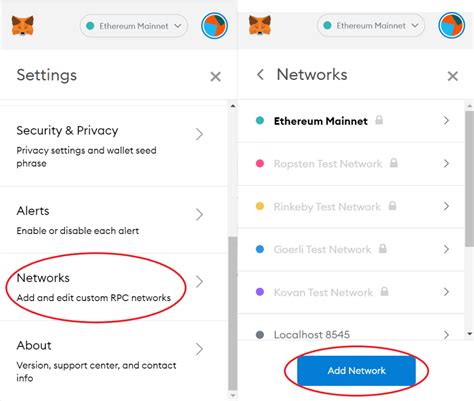Metamask: How to connect with the Metamask and Coinbase wallet separately in DAPP?
Connecting to the Metamask and Coinbase Wallet Separately in DAPP
As a decentralized application (DAPP) developer, connecting to wallets such as MetaMask and Coinbase is an essential step to secure user funds and facilitate transactions on your platform. However, when using these two popular wallets together, you may encounter issues that prevent seamless connections. In this article, we’ll explore the possible reasons behind these problems and provide guidance on how to resolve them.
The Issue:
When connecting both Metamask and Coinbase wallets simultaneously, it often leads to the Coinbase extension opening in the default browser tab. This is because MetaMask uses a different wallet provider (Avalanche) than Coinbase, which has its own integration with MetaMask. The Coinbase extension, on the other hand, relies on MetaMask’s Web3 library.
Possible Reasons:
- Wallet provider mismatch:
Although both wallets use the same blockchain (e.g., Ethereum), they may be using different wallet providers (e.g., MetaMask vs. Trust Wallet). This discrepancy can cause issues during connection attempts.
- Extension conflict: When you open the Coinbase extension in a default browser tab, it might interfere with your application’s connection to the Metamask wallet.
Solutions:
1. Separate Wallet Providers
To resolve this issue, you need to use different wallet providers for each wallet. Here are some steps:
Option A: Use MetaMask on the web and Coinbase Desktop (Windows/Mac/Linux) as a desktop wallet. Then, access your DAPP from within Coinbase.
- Open the Metamask website ([metamask.io]( in your preferred browser.
- Create an account or log in to an existing one.
- Generate a new private key for MetaMask and add it to your application.
Option B: Use MetaMask on the web, but use Coinbase as a wallet provider within your DAPP. Then, access your DAPP from the Metamask website.
- Install the MetaMask Web browser extension in your preferred browser.
- Log in to your Metamask account.
- Generate a new private key and add it to your application.
Option C: Use both MetaMask on the web and Coinbase Desktop (Windows/Mac/Linux) as wallets. Then, access your DAPP from within the Coinbase desktop wallet.
- Open Coinbase Desktop and log in to your account.
- Go to Settings > Wallets & Accounts and select “External Wallets.”
- Add a new external wallet provider using MetaMask’s Web browser extension or another method (e.g., MetaMask Desktop).
- Configure the wallet settings for MetaMask.
- Access your DAPP from within Coinbase.
2. Use a Third-Party Solution
There are some third-party solutions that can help you resolve this issue:
- MetaMask Wallets:

Some wallets, like MetaMask Wallets, offer support for connecting multiple wallets simultaneously. However, these solutions may require additional setup and configuration.
- Coinbase Wallet Integrations: Coinbase has integrated its wallet with some DAPP platforms, allowing users to connect their accounts directly within the app. Check your platform’s documentation or website to see if this option is available.
Conclusion:
Connecting to both Metamask and Coinbase wallets separately can be a bit tricky, but by using different wallet providers or third-party solutions, you should be able to resolve any issues that arise. Remember to follow these steps:
- Separate wallet providers for each wallet.
- Use a third-party solution if available.
- Check your platform’s documentation or website for specific instructions.
By following these guidelines, you’ll be able to connect to both Metamask and Coinbase wallets separately in your DAPP, ensuring seamless functionality and user experience.


